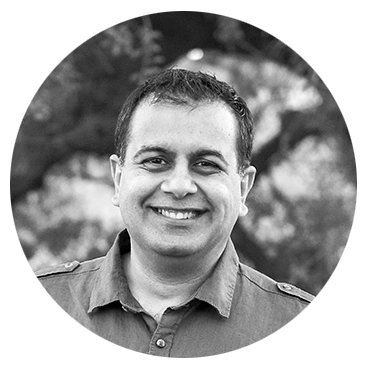
I hope you get value out of this blog post.

In Daniel Pink’s book on the science of perfect timing, he lays out the research behind when we are at our most (and least) productive during the day. It turns out that maximizing your work day isn’t about trying to cram as much work as possible into each hour. Instead, Pink explains, it’s better to focus on organizing your schedule so that you’re doing the right kind of work at the right time of day.
This idea is especially relevant to financial advisors who are often juggling lots of different tasks ranging from mundane administrative work like organizing notes to more complex tasks like financial plan analysis. With Pink’s research, you can organize all those tasks into a schedule that maximizes your performance and minimizes your risk of making mistakes.
One of the most important concepts in Pink’s book is the cycle of peak, trough, and rebound in productivity. According to his research, the brain’s ability to concentrate and process information fluctuates throughout the day.
It peaks an hour or so after you wake up and hits its lowest point (or trough) about seven hours later before rebounding slightly around hour nine.
For a standard work schedule, where you wake up at 7:00 or 8:00 A.M, that means you’ll likely be at your most productive in the morning and early afternoon and reach your trough between 2:00 P.M. and 4:00 P.M.
In fact, that two-hour window is when most people regardless of their job, make the most mistakes. Doctors are more likely to deliver fatal doses of anesthesia. Students are more likely to bomb their exams. Even CEOs are more likely to say stupid things on conference calls between the hours of 2:00 P.M. and 4:00 P.M.
After that window, productivity rebounds again, not fully reaching peak performance again but getting close for another couple of hours.
This phenomenon is universal, no matter how dedicated you are to your job or how talented you are, you are still a human being with a brain that simply can’t run at peak performance 24/7. So if you’re trying to do complex and important work during that trough phase, you’re more likely to make mistakes that you wouldn’t have made if you did it during your peak phase.
Luckily, knowing your natural shifts in mental capabilities gives you a chance to organize your work in a way that ensures you’re doing the most important tasks when you’re at your best. Here are some tips for applying this concept to your work day.

While a lot of people will fit the standard productivity schedule Pink outlines in his book where they hit their peak in the morning and their rebound after that afternoon lull, some people are the opposite: hitting their peak later in the day.
If you find yourself slow to start in the morning and hitting your peak later in the day, there’s nothing wrong with that. You just need to plan your schedule accordingly. For you, your “trough” might be those first two hours after you get to the office. Then, you rebound around 10:00 A.M and hit your peak by the time most people are hitting their trough at 2:00 P.M.
Reflect on your past experience to figure out when these different phases of the work day tend to happen for you. Then, as you read the rest of the tips below, adapt them to fit your own rhythm.
Reserve your best hours for the tasks that need to be done when you are at your absolute best: the strategizing, analysis, and problem-solving work where you can’t afford to make mistakes. Then, move onto difficult but lower priority tasks as your energy levels start to fade.
By the time you hit your trough, switch to the lowest-effort tasks, the mundane work that keeps the business running but doesn’t really demand your full attention: organizing your notes, doing meeting prep, sending emails, running errands.
During that rebound period before the work day ends, you can switch back to more important work.
Logic work is anything that involves analyzing or planning based on clearly defined rules. This is any work that has a more rigid structure and distinct right or wrong answers. When you’re rebalancing a portfolio, that logic work. You’re making those trade decisions based on a clearly defined investment strategy and your own math to identify underperforming stocks.
When you’re developing a financial plan for a client, that logic work. You’ve got a concrete set of financial goals and current assets for that client that you need to factor into a realistic plan for getting from their current position to their end goal.
Meanwhile, insight work is still complex but a little more creative and intuitive. This is anything that relies more on imagination or idea generation than on simply adhering to a strict set of rules. This might include brainstorming client acquisition strategies, writing your weekly newsletter, and thinking through solutions to any problems.
As much as possible, schedule your logic work for your peak hours and your insight work for your rebound hours.
We all have personal errands that need to be done no matter how busy we are: doctor appointments, DMV appointments, or taking your dog to the vet. Many of us tend to schedule these for early mornings so we can get them out of the way before work.
But if the early morning is your most productive time of day, don’t waste it on routine errands! Instead, schedule these appointments for that afternoon lull. If you have to take time out of your work day for errands, make sure you’re at least taking it from your least productive hours.
You’ve got a busy schedule and the thought of “making room” to take breaks just sounds like a luxury you can’t really afford. But the science proves that not only do breaks make you more productive, but they also save you time in the long run because you’re less likely to make mistakes.
According to the CDC, fatigue, and lack of sleep account for 1.23 million lost working days per year in the United States.
So, you might gain an extra 15 minutes now by skipping that break, but you’ll likely end up losing hours down the road when you’re going back to patch up errors and oversights that you made because you were forcing yourself to do “peak” work during a trough.
For maximum performance, research suggests at least one 15-minute break for every two hours of work. To make that break effective, you need to actually disconnect from work. Close your laptop, step away from your desk, and either take a walk or take a nap.
If you’re constantly too busy to take breaks, you probably aren’t delegating as effectively as you could be to your staff (or to technology).
